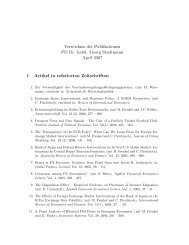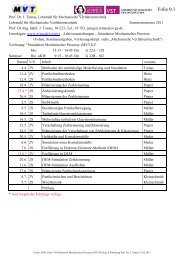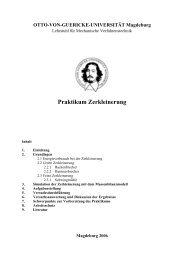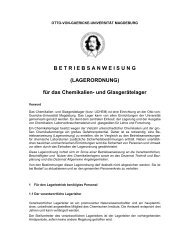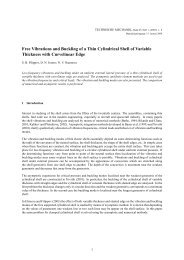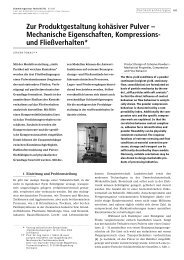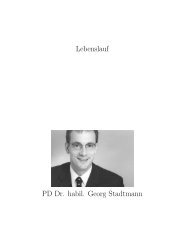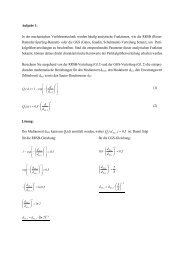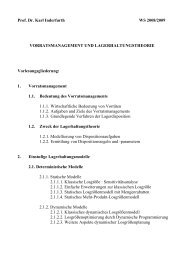Mechanics of nanoparticle adhesion â A continuum approach
Mechanics of nanoparticle adhesion â A continuum approach
Mechanics of nanoparticle adhesion â A continuum approach
Create successful ePaper yourself
Turn your PDF publications into a flip-book with our unique Google optimized e-Paper software.
40J. Tomasforming contacts in the nanoscale <strong>of</strong> center <strong>approach</strong> h K , may be described as“healing contacts”.To demonstrate this enormous <strong>adhesion</strong> potential, 1-µm silica particles werecompletely removed from a 100-mesh woven metal screen (147 µm wide) with 40m/s air velocity [127] and 32-µm glass beads from glass surface with more than117 m/s [129]. Air velocities <strong>of</strong> 10 to 20 m/s were necessary to blow <strong>of</strong>f about50% <strong>of</strong> quartz particles (d = 5–15 µm) which had adhered to filter media afterimpact velocities <strong>of</strong> about 0.28 to 0.84 m/s [28, 29].These fundamentals <strong>of</strong> particle <strong>adhesion</strong> dynamics may also be important tochemically clean silicon wafers [36, 134–141] or mechanical tool surfaces by jetpressures up to 2 MPa and CO 2 -ice particle velocities up to 280 m/s [135].4. CONCLUSIONSThe models for elastic (Hertz, Huber, Cattaneo, Mindlin and Deresiewicz), elastic–<strong>adhesion</strong>(Derjaguin, Johnson), plastic–<strong>adhesion</strong> (Derjaguin, Krupp, Molerus,Johnson, Maugis and Pollock) contact deformation response <strong>of</strong> a single, normal ortangential loaded, isotropic, smooth contact <strong>of</strong> two spheres were discussed. Theforce–displacement behaviors <strong>of</strong> elastic–plastic (Schubert, Thornton), elastic–dissipative (Sadd), plastic–dissipative (Walton) and viscoplastic–<strong>adhesion</strong>(Rumpf) contacts were also shown. With respect to these theories, a general <strong>approach</strong>for the time- and deformation-rate-dependent and combined viscoelastic,plastic, viscoplastic, <strong>adhesion</strong> and dissipative behaviors <strong>of</strong> a spherical particlecontact was derived and explained.As the main result, the <strong>adhesion</strong> force F H is found to be a function <strong>of</strong> the forcecontribution F H0 without any deformation plus a pre-consolidation or loadhistory-dependentterm with the normal force F N . These linear and non-linear <strong>approach</strong>escan be interpreted as general constitutive models <strong>of</strong> the <strong>adhesion</strong> force.It should be pointed out here that the <strong>adhesion</strong> force level discussed in this paperis approximately 10 5 –10 6 times the particle weight <strong>of</strong> <strong>nanoparticle</strong>s. This means,in other words, that one has to apply these large values as acceleration ratio a/gwith respect to gravity to separate these pre-consolidated contacts or to removemechanically such adhered particles from solid surfaces.For colliding particles a correlation between particle impact velocity and contactdisplacement response is obtained using energy balance. These constitutivemodel <strong>approach</strong>es are generally applicable for micro- and nanocontacts <strong>of</strong> particulatesolids [91, 148, 149]. Hence, these contact models are intended to be appliedfor modern data evaluation <strong>of</strong> product quality characteristics such as powder flowproperties, i.e., yield loci, consolidation and compression functions or design <strong>of</strong>characteristic processing apparatus dimensions [122, 142–151].



